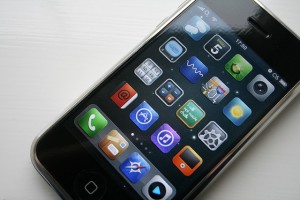Businesses have more opportunity than ever to understand what their customers want and how to give it to them. Mobile location services allow to businesses to develop programs to cater to their customers in ways they never could before and savvy marketers are turning location based data into improved customer experiences.
Mobile geolocation can help you interact with customers in a better fashion then you were able to in the past. Geolocation data can help you understand what your customers doing. This will allow you to better engage customers by being able to give them relevant, meaningful experiences. By doing this you will be able to strengthen the relationship between your brand and customers.
This will also allow brands to better respond to changes in the market over time.
In studies, around 55% of consumers responded that it would be useful to receive marketing promotions on their smartphone while in a store. With an established data program and beacon technology you can now deliver just the right message at exactly the right time and place as customers are in your store.
Make sure you give your application users the opportunity to opt-in or out of your program and vary the amount of participation they are interested in being involved with. Customers are often interested in improving their shopping and app experiences and will allow you to track certain activities if the data is protected and used to deliver more relevant content. Tell your users what data you will collect and how you will collect it. Don’t forget to tell them the benefits of allowing you to this info, like being able to personalize content. People always respond more favorably to requests if you tell them why you are doing something.
Before you can do anything you will need to begin by collecting data. Start with a plan. What data do you want to collect? Do you know how or if you can? Talk to your iPhone application developer or Android application developer about what type of data you can collect and how best to plan ahead for a program that is data driven. Companies that commit to understanding their customer can learn how to improve processes from the user’s perspective.
Once you start collecting data you can provide timely and relevant communications and offers. You will be able to customize your marketing to each customer’s needs as revealed by their movements and your data collection. Use this data to provide an enhanced, enjoyable shopping experience tailored especially for them – let the customer’s data help create the customer experience you provide.
Photo: http://bit.ly/1PEwXJf





